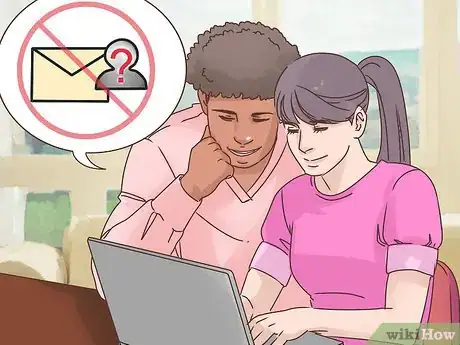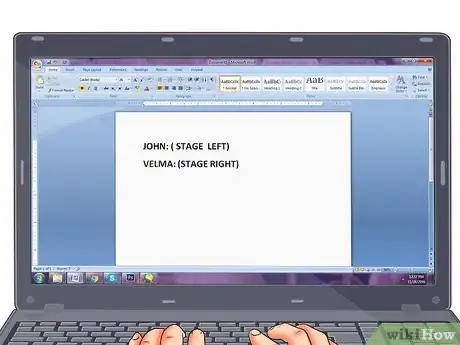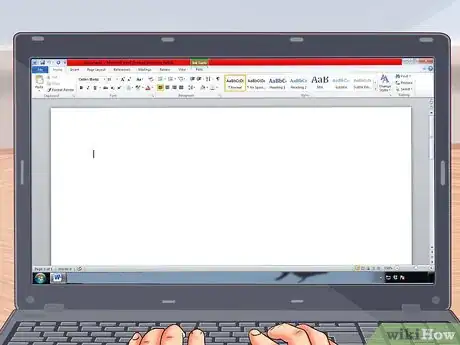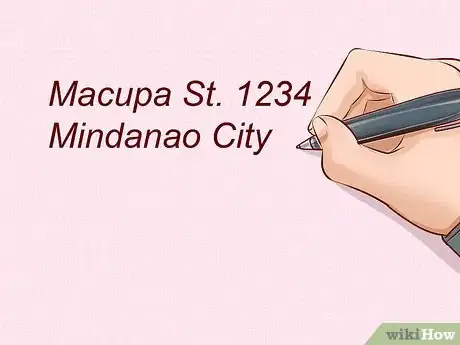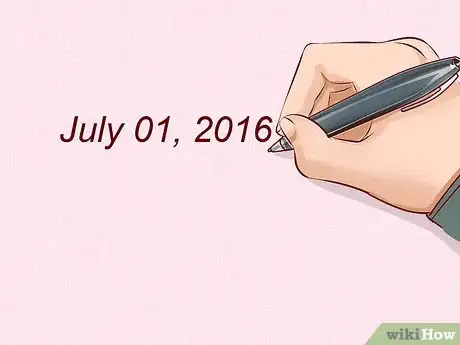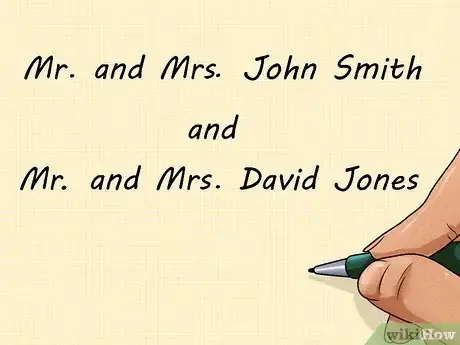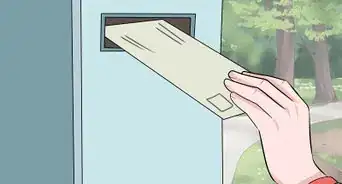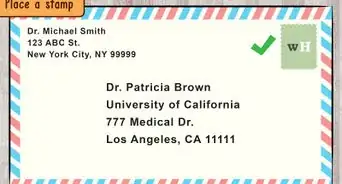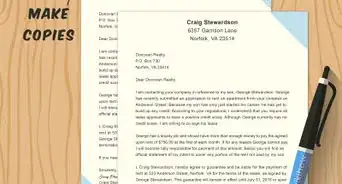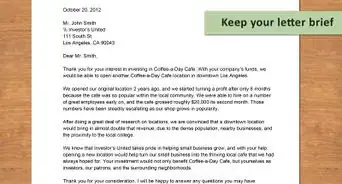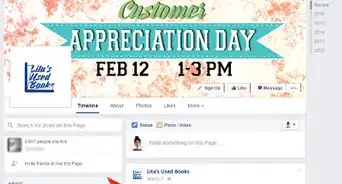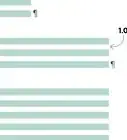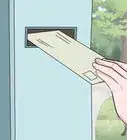This article was co-authored by Tami Claytor and by wikiHow staff writer, Jennifer Mueller, JD. Tami Claytor is an Etiquette Coach, Image Consultant, and the Owner of Always Appropriate Image and Etiquette Consulting in New York, New York. With over 20 years of experience, Tami specializes in teaching etiquette classes to individuals, students, companies, and community organizations. Tami has spent decades studying cultures through her extensive travels across five continents and has created cultural diversity workshops to promote social justice and cross-cultural awareness. She holds a BA in Economics with a concentration in International Relations from Clark University. Tami studied at the Ophelia DeVore School of Charm and the Fashion Institute of Technology, where she earned her Image Consultant Certification.
There are 9 references cited in this article, which can be found at the bottom of the page.
This article has been viewed 202,946 times.
You may do most of your business communication through email, but sometimes you have to send a formal business letter. If you have additional documents that you need to include along with the letter, you want to note them in the body of the letter and with a notation at the end. This way your recipient can make sure they've received everything you sent.[1]
Steps
Making an Enclosure Notation
-
1Close your letter. The enclosure notation occurs after the closing and signature of your letter. Use a complimentary closing such as "Sincerely" or "Yours Truly," leave space for your signature, and then type your name.[2]
- You can write thank you if you request something in the letter.[3]
- Sometimes, depending on the content of the letter. You can even write sending you wishes for a nice day.
- Generally, your closing might be more familiar if you are on more personal terms with the recipient. For example, if you are writing to your best friend's father, you might use a more informal closing such as "Kind regards" or "Best wishes."
-
2Type "Enclosure" under your name. If you have included a document other than the letter along with the letter, double space after you type your name for your signature, and type your enclosure notation.[4]
- If you've included more than one document, use the plural "Enclosures" and indicate the number of enclosures afterward. The number should either follow a colon or be enclosed in parentheses. For example, if you had three enclosures, you could type either "Enclosures: 3" or "Enclosures (3)."
Advertisement -
3Use an abbreviation. You don't necessarily have to type out the entire word "enclosure" to make an enclosure notation on a formal business letter. Both "Enc." and "Encl." are acceptable to note enclosures.[5]
- Technically, "enc." is an abbreviation for the verb "enclosed," while "encl." can mean either "enclosed" or "enclosure."
- If you're enclosing more than one document, you can note the number of enclosures after the abbreviation, but don't add an "s" to the abbreviation.
-
4List document titles. Sometimes if you have multiple enclosures, simply noting the number of documents enclosed doesn't provide enough information. If you think it's necessary, you also can include the titles of the documents after the word "enclosures."[6] .
- Make sure all documents have an easily recognizable title if you want to list them this way. You don't want your recipient trying to puzzle out whether the right documents are there.
- If you're listing titles, don't also include the number of enclosures.
-
5Include any relevant description. In some cases it also might be important to let your recipient know what type of documents you've enclosed. Typically you'll need this if you're including both original documents and copies.[7]
- Simply list the title of the document and then include the description in parentheses. For example, you might write "Enclosures: Birth certificate (original plus two copies)."
- If you've enclosed original documents that you're going to need returned to you, make sure you mention that in the body of the letter.
Formatting Your Letter
-
1Choose the best font and margin. The font of a formal business letter should be a standard, easy-to-read font such as Times New Roman or Helvetica. Typically this will be the default font on your word processing application.[8]
- The default margins should be fine as well. They should be at least an inch on all sides. If you have a shorter letter that you want to fill the page, you might consider increasing the margins a little and see if that helps balance out the page.
- For particularly short letters, you also might try a slightly larger, more spread out font, such as Verdana. But be careful that the font isn't too distracting. If you're in doubt, print the letter and hand the paper to a friend. Have them look at it for a couple seconds, then take it away and ask them to tell you about it. If the font is distracting, they'll be able to tell you.
-
2Include your address. Unless you're writing on letterhead, your address typically will be the first thing at the top of the page in a formal business letter. There's no need to include your name, since you'll be signing the letter.[9]
- Typically your address is single-spaced and right-justified. Your word processing app may have a business letter template you can use so you don't have to do all the formatting manually.
- In addition to your mailing address, you can also include your phone number, email address, or both.
-
3Type the date the letter was completed. If you're formatting your letter manually, double-space from the last line of your address and switch back to left-justified text. Type the full version of the date, formatted in the style your recipient uses.[10]
- For example, if you are writing your letter to someone in Europe, you would want to put the day first, then the month, then the year: "16 July 2017." If you are writing your letter to an American, on the other hand, you would write "July 16, 2017."
- Don't try to guess the date ahead on a formal business letter. If the recipient gets your letter before the date, it will make you look bad. Try to mail the letter as soon as possible after you print and sign it.
-
4Identify the recipient. Double-space down from the date and type the name of the person to whom you're writing, along with their mailing address. Depending on your reason for writing, you also might include their job title or company name.[11]
- After the address, skip down another two lines and type your greeting. "Dear" is appropriate, followed by the person's title and name.
- Use your discretion on whether to include the person's first name. If the person is in a position of authority, you're generally better off using "Mr." or "Ms." followed by their last name.
-
5Type the body in block style. There are several paragraph styles for formal business letters, but the block style is the simplest and most commonly used. For this style, you'll single-space your text except to double-space between paragraphs.[12]
- Paragraphs aren't indented in block style. Your text typically is left-justified, although you may choose "justified" alignment. The text will be spaced so that it's even on both sides of the page. Justified text may be more difficult to read in some contexts, but for a short letter it can make your text look cleaner. It's mostly a matter of personal choice.
-
6Use the right paper to print your letter. Once you've gone to the trouble of drafting and formatting a formal business letter, you want to make sure the paper you've chosen reflects the dignity of the letter itself.[13]
- The paper you choose can determine whether your letter is taken seriously by the recipient. This is especially important if you're writing a formal business letter because you're applying for a job, or trying to gain admittance to a school.
- Generally you want paper that's a slightly heavier stock, and white or off-white. Colored paper might be suitable for personal letters, but for business letters it will make you look less than serious.
Discussing Enclosures in the Body
-
1Indicate your reason for writing. A business letter should be brief and to the point. After introducing yourself, go immediately into why you are writing the letter and what you hope to accomplish as a result.[14]
- For example, if you're writing to apply for a job, you might write "My name is Sally Sunshine, and I'm a recent graduate of the Cupcake Academy. I saw you're looking for a cupcake baker, and I believe my skills would be a good match for you."
-
2Mention enclosures in context. You want to mention any enclosures in the body of the letter in addition to including a notation after the closing. This prepares the recipient for the documents and how they relate to your reason for writing.[15]
- For example, you might write "As you can see on my résumé (enclosed), I graduated from Cupcake Academy with the highest grades in my class and a commendation from the Dean."
- This method of noting enclosures in the body of your letter is most appropriate when you don't have a lot of enclosures.
-
3Describe any documents you've enclosed. If you're enclosing multiple documents, it may be more efficient to simply list them in your letter, along with a brief explanation of what those documents are.
- For example, suppose you are writing a business to demand a refund for a faulty product. You might write "I have enclosed my receipt for the merchandise along with two photos showing the defect that was apparent when I first removed it from the box."
- In your notation below the closing of your letter, this would be expressed either as "Enclosures (3)" or "Enclosures: Receipt dated July 11, 2017; photos (2)."
-
4Explain how the enclosures are relevant. If you've listed your enclosures in the body of your letter, you may need to include a sentence or two that demonstrates to the recipient why and how those documents relate to your original reason for writing.[16]
- For example, if you're enclosing a receipt and photos to demand a refund for a faulty product, you might write "The photos indicate the problem with this item. If you compare the date on the photos to the date on the receipt you'll see that they were taken the day I bought the product. This product was damaged when I bought it."
Community Q&A
-
QuestionIn writing an application letter, which term is correct one?: "I enclosed my resume" or "I enclose my resume."
 DonaganTop Answerer"I have enclosed..." is probably best.
DonaganTop Answerer"I have enclosed..." is probably best.
References
- ↑ http://emilypost.com/advice/effective-business-letters/
- ↑ http://emilypost.com/advice/effective-business-letters/
- ↑ https://www.usingenglish.com/resources/letter-writing.php
- ↑ https://owl.english.purdue.edu/owl/resource/653/01/
- ↑ http://www.macmillandictionary.com/us/thesaurus-category/american/abbreviations-in-letters-and-correspondence
- ↑ https://www.nmu.edu/writingcenter/parts-business-letter
- ↑ http://editingandwritingservices.com/business-letter-formatting/
- ↑ http://editingandwritingservices.com/business-letter-formatting/
- ↑ https://owl.english.purdue.edu/owl/resource/653/01/
- ↑ https://owl.english.purdue.edu/owl/resource/653/01/
- ↑ https://owl.english.purdue.edu/owl/resource/653/01/
- ↑ https://owl.english.purdue.edu/owl/resource/653/01/
- ↑ http://career.vt.edu/job-search/presenting_yourself/cover-letters.html
- ↑ https://en.oxforddictionaries.com/writing-help/how-to-write-a-business-letter
- ↑ https://www.g-w.com/pdf/sampchap/9781605254722_ch09.pdf
- ↑ https://en.oxforddictionaries.com/writing-help/how-to-write-a-business-letter
About This Article
If you need to note enclosures in a letter, leave a double space under your signature and salutation, then write “Enclosure.” To signify that your letter has more than 1 document enclosed, use the plural, “Enclosures” followed by a colon and the number of documents. Alternatively, you can use an abbreviation like “Enc.” or “Encl.” instead of writing “Enclosure” out fully. Consider including the titles of the documents enclosed and any descriptions that might be helpful. In the body of your letter, mention the documents you’ve enclosed and give them context so the reader is prepared to read them. For more tips, like how to format your letter, read on.


